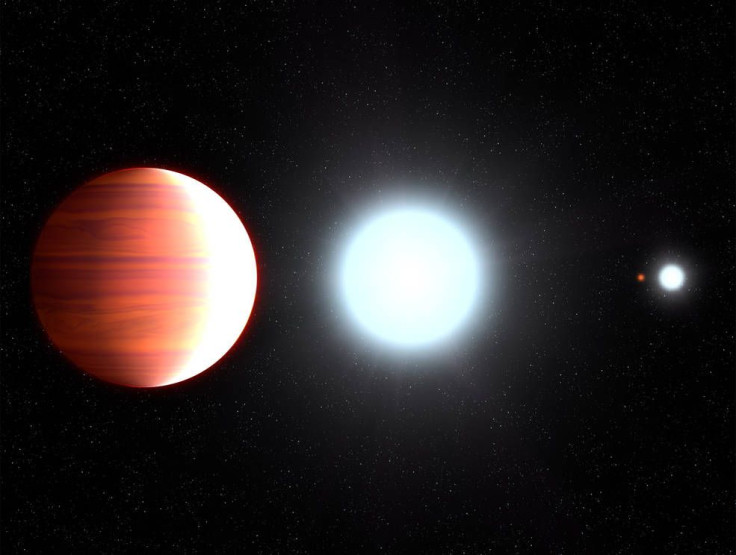NASA’s Hubble Spots ‘Hot Jupiter’ Exoplanet With Sunscreen Snow

If Baz Luhrmann was on exoplanet Kepler-13Ab, the reaction to his 1997 hit song “Everybody's Free (To Wear Sunscreen),” which was a spoken word rendition of an essay by Mary Schmich that appeared earlier the same year in the Chicago Tribune, would have been somewhat different. No surprise, that, given how this gas giant planet has sunscreen falling as snow.
Kepler-13Ab is a “hot Jupiter” class exoplanet, the kind that is, like Jupiter, gas giants, but orbits much closer to their parent stars, with orbital periods of less than 10 Earth days. The same side of the planet is always facing its star, meaning it is permanently daytime on one side and always night on the other.
It is the nighttime side of Kepler-13Ab which sees precipitation of titanium oxide, the active ingredient in sunscreen not found naturally on Earth. And there is absolutely none of it to be found on the daytime side of the exoplanet.
Titanium and other heavy metal oxides are usually found in the atmospheres of cool stars, but another blistering exoplanet (WASP-19b, also a hot Jupiter) was recently found to have a titanium atmosphere. The presence of sunscreen on Kepler-13Ab, however, is far more dramatic.
The discovery was made using the Hubble Space Telescope, and in a recent paper, astronomers proposed a mechanism to explain the creation of sunscreen snowfall. The titanium oxide gas in the upper atmosphere is carried to the colder, nighttime side of the planet by strong winds, where the low temperatures cause it condense into crystalline flakes. These flakes come together to form clouds and then fall as snow. This sunscreen snow is trapped in the lower atmosphere of Kepler-13Ab, where the planet’s strong surface gravity — six times greater than Jupiter’s — drags it from the upper atmosphere.
The Hubble observation marks the first time this precipitation process, known as “cold trap,” has been seen on an exoplanet.
“Understanding what sets the climates of other worlds has been one of the big puzzles of the last decade. Seeing this cold-trap process in action provides us with a long-sought and important piece of that puzzle,” Jason Wright, associate professor of astronomy at Pennsylvania State University in University Park, and one of the paper’s co-authors said in a statement Thursday.

The astronomers who wrote the paper made the observation based on the fact that Kepler-13Ab was unusual among hot Jupiters in having a cooler atmosphere at higher altitudes. Normally, titanium oxide would absorb light from the star and then radiate it as heat, making the atmosphere hotter at higher altitudes.
Seeing the opposite on Kepler-13Ab led the researchers to surmise that there must be some mechanism in place that was removing the titanium oxide from the dayside atmosphere of the gas giant.
“Presumably, this precipitation process is happening on most of the observed hot Jupiters, but those gas giants all have lower surface gravities than Kepler-13Ab. The titanium oxide snow doesn’t fall far enough in those atmospheres, and then it gets swept back to the hotter dayside, revaporizes, and returns to a gaseous state,” Thomas Beatty, assistant research professor of astronomy at Penn State and the lead author of the study, explained in the statement.
Kepler-13Ab, with the blistering surface temperature of about 5,000 degrees Fahrenheit on the dayside, is located about 1,730 light-years away from Earth in the Kepler-13 system. The system itself has three stars, two of which are blue and of similar age to the sun. The third is an orange dwarf.
© Copyright IBTimes 2024. All rights reserved.





















